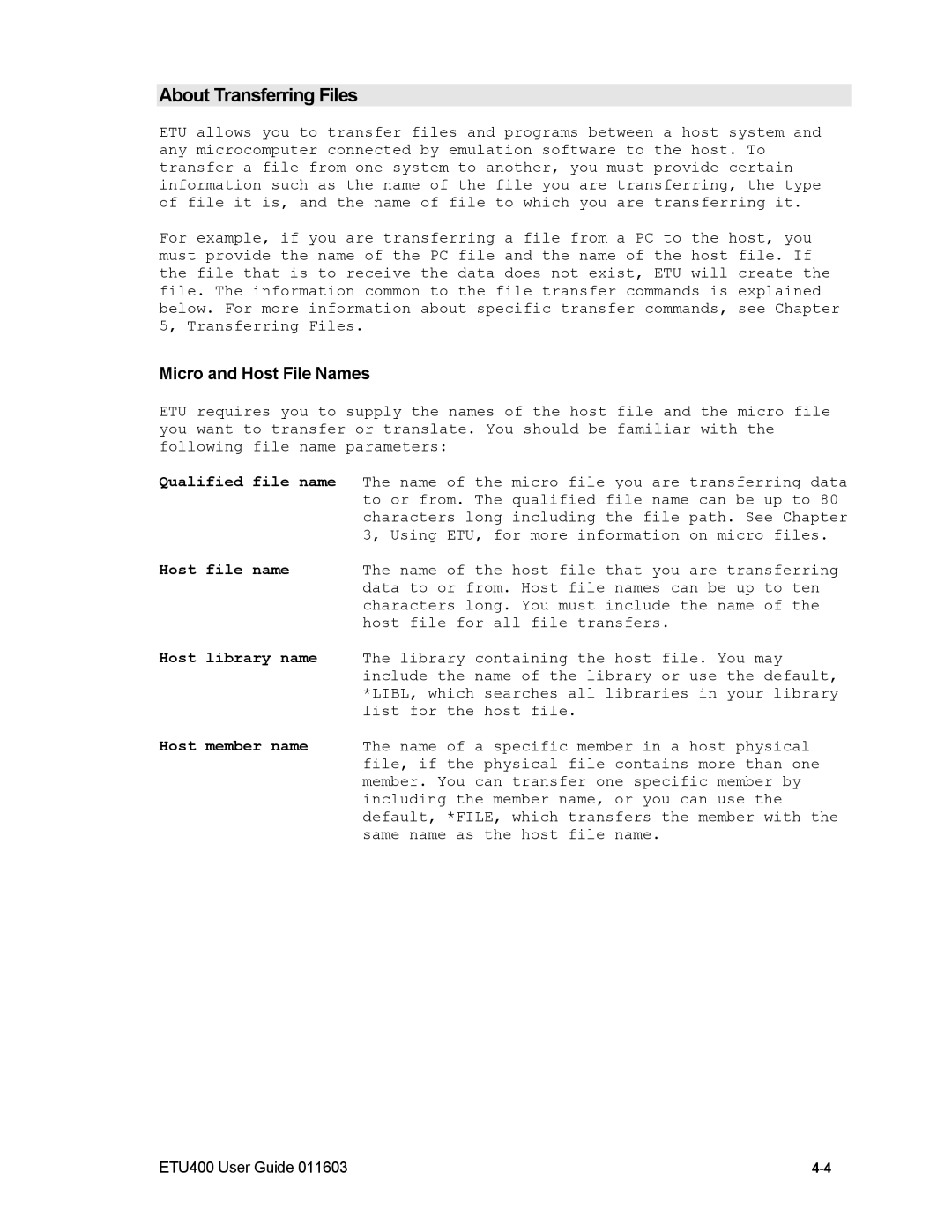About Transferring Files
ETU allows you to transfer files and programs between a host system and any microcomputer connected by emulation software to the host. To transfer a file from one system to another, you must provide certain information such as the name of the file you are transferring, the type of file it is, and the name of file to which you are transferring it.
For example, if you are transferring a file from a PC to the host, you must provide the name of the PC file and the name of the host file. If the file that is to receive the data does not exist, ETU will create the file. The information common to the file transfer commands is explained below. For more information about specific transfer commands, see Chapter 5, Transferring Files.
Micro and Host File Names
ETU requires you to supply the names of the host file and the micro file you want to transfer or translate. You should be familiar with the following file name parameters:
Qualified file name The name of the micro file you are transferring data to or from. The qualified file name can be up to 80 characters long including the file path. See Chapter 3, Using ETU, for more information on micro files.
Host file name The name of the host file that you are transferring data to or from. Host file names can be up to ten characters long. You must include the name of the host file for all file transfers.
Host library name The library containing the host file. You may include the name of the library or use the default, *LIBL, which searches all libraries in your library list for the host file.
Host member name The name of a specific member in a host physical file, if the physical file contains more than one member. You can transfer one specific member by including the member name, or you can use the default, *FILE, which transfers the member with the same name as the host file name.
ETU400 User Guide 011603 |
